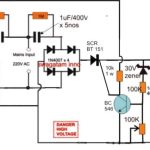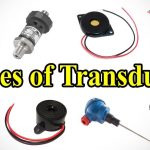The word “Fuzzy” means hazy, blurred, confused or not clear. When it comes to binary logic, the statement is either true or false i.e. “1″ or “0″. For example we say “The velocity of a body is 100 Km/h”, which may be either true or false. But in many cases we come across such situations where we cannot predict such behavior lack of clarity and the answer could be either “not sure’-“may be”-“that depends on” and so on.
On a pleasant summer day the statement “the temperature is too high”, is neither true nor false. This is a qualitative statement and signifies an opinion rather than an objective fact. On the other hand a person sitting in a snow storm on the top of a hill feels a bit cooler than a person sitting at lower height in the foothills.
It means that the real world is too complicated for precise description of certain situations, therefore approximation (fuzziness) must be introduced in order to get a traceable and reasonable model. It means there is no certainty and it all depend on the context. In this article we will see about fuzzy logic implementation in various applications such as information systems and their engineering uses.
Fuzzy logic from engineering point of view
Fuzzy logic deals with the uncertainty by attaching degree of certainty in your answer to logical questions. Fuzzy systems are widely used in commercial and practical engineering. Fuzzy logic is simple and can be easily implemented, even by a person who is not a specialist in control theory. In most cases some one with intermediate technology background could implement the fuzzy logic. The control system will not be optimal, but would be acceptable.
Fuzzy logic is not the answer to all technical problems, but mainly for the control situations, where simplicity and speed are of high priority.
Fuzzy logic control in contrast to binary logic Yes (1) and No (0), reacts more like a human being. Thus yes and No might be replaced by:
Definitely Yes
Probably Yes
May Be
Probably No
Definitely No
What Are fuzzy systems?
Fuzzy systems are knowledge-based or rule based systems. The heart of fuzzy system is a knowledge base consisting of statements like “IF-THEN”. Following statement is a fuzzy if-then rule:
IF car speed is high, THEN apply less force to the accelerator. A fuzzy system is developed on the basis of “IF-THEN” statement. Suppose we need to control the speed of a car, we have two approaches
1. Develop a PID based controller
2. To emulate the human drivers
Broadly speaking, human drivers use the following three types of rules, in a normal situation while driving:
3. IF speed is low, THEN apply more force to accelerator
4. IF speed is medium, THEN apply normal force to the accelerator
5. IF speed is high, THEN apply less force to the accelerator
Where the words: low, more, medium, normal, High are characterized by membership function.
Where are fuzzy systems used and how?
Fuzzy systems are widely used in a variety of fields, ranging from control signal processing, communication, integrated circuit manufacturing, expert systems to business and medicine. However the most significant application is focused on control systems.
A typical fuzzy control system can be open loop or closed loop . When used as an open loop, the fuzzy system sets up some control parameters, and then the system operates according to these parameters. Many of consumer electronics applications are open loop. When used in a closed loop the, the fuzzy system measures the output of the process and takes control action/s on the process continuously. Such applications can be found in industries.
Understanding Fuzzy Logic Continues…
This page lists a few practical applications of fuzzy systems in the real world situations
Practical engineering: Control engineers take advantage of fuzzy logic controllers where on-board computing power is limited and a small degree of control is sufficient.
Commercial use: Commercially available fuzzy logic controllers are used to control the machines and other consumer products. Theses include:
· Environmental Controls
· Air Conditioners
· Humidifiers
· Domestic Goods
· Washing machines/Dryers
· Vacuum cleaners
· Toasters
· Microwave Ovens
· Refrigerators
Real world fuzzy system examples
Fuzzy Washing Machine
The fuzzy washing machine was the first consumer product based on fuzzy controller. These machines use a fuzzy system to automatically set the proper cycle according to the type and load of clothes and degree of dirtiness.
It is a three-input-one output system, where the three inputs are measurement of dirtiness, type of dirt, and load size and the output is the correct cycle. It measures dirt by passing a beam of light through the dirty water. Lesser the amount of light that passes through, means that there is more dirt. This is done by an optical sensor. The sensor can also tell about the type of dirt i.e. whether it is mostly mud, soil or oil based on the manner in which the light behaves
Digital Image Stabilizer
I am sure all of you have tried taking pictures or movie shots trying your best to keep your hand steady. It is quite difficult for a person to take a picture shot or make a video without slight shaking of the hands. Now a days most modern cameras have an inbuilt image stabilizer that works on fuzzy logic and is constructed based on the following heuristics:
· IF all the points in picture are moving in same direction THEN the hand is shaking
· IF only some points in the picture are moving THEN the hand is not shaking
More specifically the digital image stabilizer compares each current frame to the frame previously stored in its memory.
Fuzzy System in Cars
An automobile system is the collection of many systems – engines, transmission, brake, suspension, steering and so forth. A fuzzy system has been applied to almost all these systems.
For example a Nissan has fussy based system for automatic transmission that saves fuel of the order of 12 to 17 percent. The system is based on following observation. A normal transmission shifts whenever a car passes a certain speed, the change is very often and each shift consumes gas. However human drivers not only shift less frequently, but also consider non speed factors. For example, if accelerating up a hill, they may delay the shift. Nissan’s fuzzy automatic transmission device summarizes these heuristics into collection of fuzzy IF-THEN rules that were then used to construct a fuzzy system to guide the gear system.
Fuzzy System in Subways
A most amazing example of the fuzzy based system is the Sendai (Japan) subway. This subway is 14 km long and has 16 stations. The train runs along very smoothly in the subway and it has a fuzzy controller that uses the following rules:
For safety: IF the speed of train is approaching the limit speed, THEN select the maximum break notch.
For riding comfort; IF speed is in acceptable range, THEN do not change the control notch.
The automatic stopping controller was constructed with the following rule:
For riding comfort; IF the train will stop in the allowed zone, THEN don’t change the control notch.
For riding comfort and safety; IF the train is in allowed zone, THEN change the control notch from acceleration to slight breaking.


